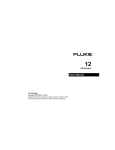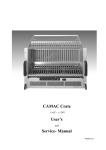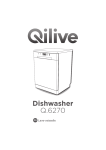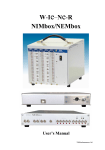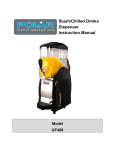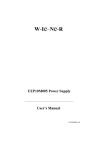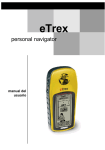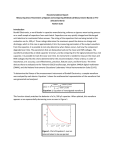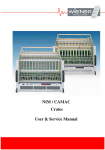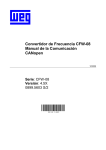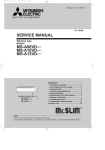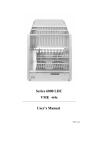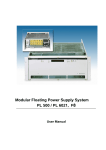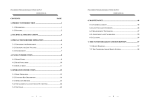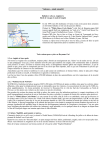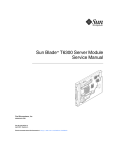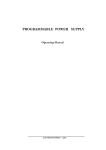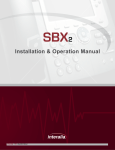Download UEP 10 Manual - W-IE-NE
Transcript
NIM / CAMAC User’s Manual *00Sachnummer.A0 Users Manual NIM CAMAC W-Ie-Ne-R Plein & Baus GmbH General Remarks The only purpose of this manual is a description of the product. It must not be interpreted as a declaration of conformity for this product including the product and software. W-Ie-Ne-R revises this product and manual without notice. Differences of the description in manual and product are possible. W-Ie-Ne-R excludes completely any liability for loss of profits, loss of business, loss of use or data, interrupt of business, or for indirect, special incidental, or consequential damages of any kind, even if W-Ie-Ne-R has been advises of the possibility of such damages arising from any defect or error in this manual or product. Any use of the product which may influence health of human beings requires the express written permission of W-Ie-Ne-R. Products mentioned in this manual are mentioned for identification purposes only. Product names appearing in this manual may or may not be registered trademarks or copyrights of their respective companies. No part of this product, including the product and the software may be reproduced, transmitted, transcribed, stored in a retrieval system, or translated into any language in any form by any means with the express written permission of W-Ie-Ne-R. May 05 i *00Sachnummer.A0 Users Manual NIM CAMAC W-Ie-Ne-R Plein & Baus GmbH Table of contents: 1 General Information......................................................................................................... 1 1.1 NIM-CAMAC bins ...................................................................................................... 1 1.1.1 NIM Bin UEN 01................................................................................................. 1 1.1.2 NIM Bin UEN 03................................................................................................. 1 1.1.3 CAMAC Bin UEC 01 .......................................................................................... 2 1.2 Fan Trays ..................................................................................................................... 2 1.2.1 UEL 01 Fan Tray (EC Fan tray) .......................................................................... 3 1.2.2 UEL 03 Fan Trays (LX Fan tray)......................................................................... 3 1.3 UEP / CEP and PS / CS power supplies ...................................................................... 6 2 1.3.1 Regulator boards UEP 10/21/22 ........................................................................ 14 1.3.2 Monitoring and alarming signals (UEP 10/21/22) ............................................. 15 Operation, Function and Control ..................................................................................... 6 2.1 Fan tray operation and control ..................................................................................... 6 2.1.1 Function of fan tray switches and informations of the LED’s ....................... 6 2.1.2 programming of the fan tray UEL 03 (In conjunction with PS 336) ................... 7 2.1.3 programming of the fan tray UEL 03 (In conjunction with UEP XX(CEP))....... 8 2.1.4 remote control (optional) ..................................................................................... 8 2.2 NIM-CAMAC Bin technical details .......................................................................... 10 2.2.1 CAMAC Bin UEC 01 Pin assignment PG 26 to power supply (PG27) ............ 10 2.2.2 NIM UEN 01/03 Pin assignment PG 26 to power supply (PG27).................... 12 2.2.3 NIM UEN 01 Pin assignment PG 32 to fan tray (PG 31) ................................. 13 2.3 Power Supply UEP (CEP) 10-21-22.......................................................................... 14 2.3.1 Temperature sensors .......................................................................................... 16 2.3.2 Adjustment......................................................................................................... 16 2.3.3 Calibration of output voltage (UEP 10, 52, 53, 66) ........................................... 16 2.3.4 Calibration of outputvoltage (UEP 21/22) ......................................................... 17 2.3.5 Pin assignment PG 28 for M-power supplies to monitor (PG 29) .................... 17 2.4 Power supply PS (CS) 336......................................................................................... 18 2.4.1 Adjustment......................................................................................................... 19 2.4.2 Pin assignment PG 28 for M-power supplies to monitor (PG 29) .................... 19 APPENDIX A : Technical details.......................................................................................... 20 May 05 ii *00Sachnummer.A0 Users Manual W-Ie-Ne-R NIM CAMAC Plein & Baus GmbH 1 General Information All Wiener NIM and CAMAC Crates consist of a bin, a fan tray (except UEN 03) and a power supply. The NIM power supplies are (almost) always linear regulated, while the CAMAC power supplies are either linear (till 600W) or switching noise technology. 1.1 NIM-CAMAC bins 1.1.1 NIM Bin UEN 01 The UEN 01 is a 7U NIM-bin for 12 high powered NIM-modules. The power supply has to be plugged in and locked from the rear side. For the fan tray unit a space of 2U high is foreseen, to bear any kind of fan units which are designed according to the relevant CERN spec. The bin is equipped with 12 high-quality long-life NIM connectors, which are completely wired parallel. The installed connector pins are made massive brass, gold plated. Dimensions (whd): 483mm (=19″) x 310mm x 525mm (with power supply max 570mm), weight 11,4 kg A special construction has a reduced depth: 550mm incl. power supply. These bins fulfill CE requirement, if they are used in combination with CE marked fan trays (CEL) and power supplies (CEP) 1.1.2 NIM Bin UEN 03 The NIM-bin UEN 03 is a 5U NIM-bin for 12 NIM-modules according to the NIM specification. The wiring and mechanic accords to CERN spec. The frontpanel is equipped with main switch, control LED’s and test sockets for all voltages. The UEN 03 has no space for a fan tray. The power supply, UEP (CEP) 10/21/22 will be mounted on its rearside. The installed connector pins are made massive brass, gold plated. Dimensions (whd): 483mm (=19″) x 222mm x 525mm (with powersupply max. 570mm), weight: 9,2 kg May 05 1 *00Sachnummer.A0 Users Manual NIM CAMAC W-Ie-Ne-R Plein & Baus GmbH Switches: POWER ON/OFF main switch for power supply Indicators: AC POWER STATUS main switch integrated green LED lights if all voltages are within the limits* OVERHEAT yellow LED lights if an overheat in the power supply occur OVERLOAD red LED lights if an over-current is detected *In combination with M monitoring only 1.1.3 CAMAC Bin UEC 01 The CAMAC-bin UEC 01 is a 7U CAMAC-crate for 25 CAMAC-modules according to CERN-CAMAC-NOTE 46-04. The moduleconnectors have been centered by metal-guides, before touching the dataway plugs. Power supply plugged in and locked from rear side, fan tray from front side. Dimensions (whd): 483mm (=19″) x 310mm x 525mm (with power supply 570mm) A special construction is equipped with additional Y1 and Y2 lines parallel to ±6V for 80 A capability. Type UEC01 VH, to use in combination with PS 336; mandatory for PS 336 VH types 1.2 Fan Trays Except the UEN 03 Crate, all NIM and CAMAC Crates are equipped either with an UEL 01 or an UEL 03M fan tray. The main difference between those fan tray is, that the UEL 03M provides a complete monitoring (acc. Cern spec.) and the UEL 01 a minimized monitoring to the user. May 05 2 *00Sachnummer.A0 Users Manual NIM CAMAC W-Ie-Ne-R Plein & Baus GmbH 1.2.1 UEL 01 Fan Tray (EC Fan tray) The UEL (CEL) 01 have three noise reduced 3 axial fans, which produce a maximum airflow of 380m³/h static pressure. Control panel with mains on/off, mains lamp, test sockets with LED’s for all 6 voltages and one for ground. All voltage bushes are overload protected by internal resistors. Buzzer alarm and LED’s for status bad, overload, overtemperature, if supported by used power supply. Weight 4 kg UEL (CEL) 01 unit can be operate in two different airflow modes. In the standard mode, the air is taken from the front. A bottom side air flow can be reached by removing the bottom plate and mounting an optional front cover. The max. airflow is much higher than 380m³/h and shows a good homogeneity. 1.2.2 UEL 03 Fan Trays (LX Fan tray) The UEL 03M is the W-Ie-Ne-R standard Fan tray, which conforms the CERN specification entirely and adds some interesting features, like variable fan turning, alphanumerical display etc. The W-Ie-Ne-R UEL 03M is a modular fan tray unit for use in NIM 01 or CAMAC crates which conform the CERN standard. Three built-in DC-fans with variable fan speed produce an air flow large is enough to dissipate the heat produced by the plugged in NIM or CAMAC modules. The micro-processor based fan tray unit is equipped with an alphanumeric display to inform about voltages, currents, temperatures, power and fan speed. In case of fail functions this display can be used as a diagnostic system for trouble shooting. If used together with the PS 336 W-Ie-Ne-R high power CAMAC power supply, software controlled current limits can be defined by the help of the front panel display and switches. Additional the unit can be prepared with an interface for crate remote control (IEC, HS CAENET, or CANbus). Plugged into a NIM or CAMAC crate which is designed according to the CERN standard (CAMAC note 64-04 or NIM 8120/8053) from the front the UEL 03M fan tray and control unit occupies the two units of the crate below the CAMAC or NIM slots. Three axial DC.-fans provide a sufficient air flow to dissipate the heat generated in the modules. The UEL 03M fan-tray can be operated in two different air inlet modes. May 05 3 *00Sachnummer.A0 Users Manual NIM CAMAC W-Ie-Ne-R Plein & Baus GmbH In the standard mode the air is taken from the front and then pushed upwards to the modules. A bottom side air inlet for full cooling efficiency can be reached by removing the bottom plate of the fan-tray and mounting an optional front cover. The maximal air flow reached in this mode is greater then 540 m3/h and shows a good homogeneity. Thus, up to 1600 W may be dissipated by the air flow. As depicted in fig. 1 the maximum air flow as well as the static pressure depends on the air resistance given by the plugged in modules. Note, that this maximum value may be diminished by empty, not covered slots. Working with front air inlet reduces the airflow to 400 m3/h and the homogeneity is not so excellent. In this mode about 800-1000W can be cooled. May 05 4 *00Sachnummer.A0 Users Manual NIM CAMAC W-Ie-Ne-R Plein & Baus GmbH UEL 03M frontpanel May 05 5 *00Sachnummer.A0 Users Manual NIM CAMAC W-Ie-Ne-R Plein & Baus GmbH 1.3 UEP / CEP and PS / CS power supplies The main difference between an UEL XX and an CEL XX power supply is, that the UEL’s provide a 115 VAC and fulfil the CERN-Standard, while the CEL’s fulfill the CE standard; (No 115 VAC). Both power supplies are linear regulated and unless nothing else is mentioned all statements made for an UEL XX are also valid for a CEL XX. The PS 336 XXX and the CS 336 XXX power supplies are built in the low noise switching technology. The PS 336 XXX fulfil the CERN standard, while the CS 336 XXX fulfill the CE standard. unless nothing else is mentioned, all statements made for a PS 336 XXX are also valid for a CS 336 XXX. 2 Operation, Function and Control 2.1 Fan tray operation and control 2.1.1 Function of fan tray switches and informations of the LED’s 2.1.1.1 UEL 01 The UEL 01 fan tray is a simplified fan tray which conforms the CERN-Standard: The front panel is equipped with the following facilities: Switches: POWER on/off main switch for ventilation and power supply LED indicators: STATUS green LED lights, if all voltages are within the limit* OVERTEMPERATURE yellow LED lights if overtemperature occurs OVERLOAD red LED lights, if an over current is detected. AC POWER main switch integrated *In combination with M monitoring power supply all failure signals, except fan fail, are generated and processed by the power supply, which is installed. May 05 6 *00Sachnummer.A0 Users Manual W-Ie-Ne-R NIM CAMAC Plein & Baus GmbH 2.1.1.2 UEL 03M Switches: POWER ON/OFF main switch for ventilation MODE SELECT selection switch to choose items and values for fan tray and power supply and control FAN SPEED push button for stepwise in-or decrease fan speed FAN AUTO OFF If this switch is used, the crate will still be powered, even if there is a fan failure. LED indicators: AC POWER green large LED lights , if POWER is on STATUS green LED lights if all voltages are within the limits FAN FAIL yellow LED lights if a fan failure is recognized OVERHEAT yellow LED lights if an overheat in the power supply occurs FAN SPEED red control LED for reduced fan speed (below 3000 rpm) FAN AUTO OFF red control LED for “only warning after fan failure” mode (DC off after failure disabled) 2.1.2 programming of the fan tray UEL 03 (In conjunction with PS 336) Following steps are necessary to change the factory settings (Umax, Umin, Imax) • Crate must be switched on • Choose the channel with the lever-switch ‘MODE SELECT’ May 05 7 *00Sachnummer.A0 Users Manual W-Ie-Ne-R NIM CAMAC Plein & Baus GmbH • Hold simultaneously the lever-switch ‘MODE SELECT’ and ‘POWER’ in top position and wait about 10 seconds. • Choose with ‘MODE SELECT’ what you want to change: Umax, Umin, Imax • Bring lever ‘POWER ON’ in top position for about 10 seconds. • Change the value through ‘MODE SELECT’ • Push lever ‘POWER OFF’ down to confirm the new value • Push lever ‘POWER OFF’ down to come back to the normal working status. If you want to change the ‘AUTO POWER ON/OFF’ function following steps are necessary: Crate must be switched on Use lever-switch ‘MODE SELECT’ until ‘POWER’ is displayed. • Hold simultaneously the lever ‘MODE SELECT’ and ‘POWER’ in top position and wait about 10 seconds. • Change setting through ‘MODE SELECT’ • Confirm setting through pushing ‘POWER OFF’ 2.1.3 programming of the fan tray UEL 03 (In conjunction with UEP XX(CEP)) By following the steps showed at point 2.1.2 you have to change the sensitiveness of the displayed currents on the channels ±12V and ±24V: UEP 10: 25mV/A UEP 21/22: 50mV/A 2.1.4 Remote control (optional) W-Ie-Ne-R Fan trays are optionally equipped with a CAN, IEC (IEEE) or CAENET interface connector as well as the correspondent interface . Further details see in a separate manual. 2.1.4.1 May 05 CAN-bus interface operation: 8 *00Sachnummer.A0 Users Manual W-Ie-Ne-R NIM CAMAC Plein & Baus GmbH If equipped with the optional CAN-bus interface the front panel is equipped with additional elements for network operation: SWITCHES ADDR CAN-bus crate address LOCAL not used LED – INDICATORS green large LED lights when net is OK LOCAL The 9-pin Sub-D connector for CAN-bus interfacing is prepared according to CiA DS 102-1: Pin Line Comment 1 - 2 CAN_L 3 GND 4 - reserved by CiA 5 - reserved by CiA 6 - 7 CAN_H 8 - 9 - reserved by CiA CAN_L bus line (dominant low) Ground CAN_H bus line (dominant high) reserved by CiA (failure signal) To change the CAN-bus address the ADDR switch has to be pressed. The address can be selected within the range 1 ... 127. The chosen net address is displayed on the fan tray display. If the display has been showing another parameter (voltage, fan speed, ...9 before changing the net address it will return to the previous display. To shut the crate for remote control the position „CANBUS DISABLED“ has to be chosen. May 05 9 *00Sachnummer.A0 Users Manual W-Ie-Ne-R NIM CAMAC Plein & Baus GmbH Within the W-Ie-Ne-R CAN-bus protocol a broadcast call to all connected crates is possible (see CAN-BUS Interface report) . The address for this general call is factory prepared 127 however it can be changed by the following procedure: 1. Select display channel „GENERAL CALL“ with MODE SELECT switch. 2. Switch up or down the ADDR switch to change the value. If the crate has to be disabled for general call the position „GENERAL CALL OFF“ has to be selected. According to the CAN bus specification the data transfer speed is depending on the net length as given within the following table: Max. Distance Bit Rate 10 m 1.6 Mbit/s 40 m 1.0 Mbit/s 130 m 500 kbit/s 270 m 250 kit/s 530 m 125 kbit/s 620 m 100 kbit/s 1300 m 50 kbit/s 3300 m 20 kbit/s 6700 m 10 kbit/s 10.000 m 5kbit/s Type high- speed low-speed To adjust the net speed for a given net length select the bit rate according to this table and set on the crates: 2.2 1. Select display channel „SPEED“ with MODE SELECT switch. 2. Switch up or down the ADDR switch to select the required rate. NIM-CAMAC Bin technical details 2.2.1 CAMAC Bin UEC 01 Pin assignment PG 26 to power supply (PG27) Function May 05 PG 26 Function 10 PG 26 *00Sachnummer.A0 Users Manual W-Ie-Ne-R NIM CAMAC Plein & Baus GmbH chassis ground 65 +6V return 43-44-45-46-70 220V phase switch 74 -6V 47-48-49-50-67 220V phase mains 75 -6V return 51-52-53-54-71 220V neutral switch 76 +12V 55 220V neutral mains 77 +12V return 56 117VAC neutral 78 -12V 57 117VAC phase 79 -12V return 58 +200V 80 +24V 59 +200V return 82 +24V return 60 power failure 1 -24V 62 overload warning 2 -24V return 63 overheat warning 3 0V monitor 5 buzzer warning 4 Y1 current 7 Y2 sensing 28 Y1 current return 8 Y2 sensing return 27 Y2 current 10 +6V sensing 29 Y2 current return 11 +6V sensing return 26 clean earth 64 -6V sensing 30 +6V current 12 -6V sensing return 27 +6V current return 13 +12V sensing 31 -6V current 14 +12V sensing return 26 -6V current return 15 -12V sensing 32 +12V current 16 -12V sensing return 27 +12V current return 17 +24V sensing 33 -12V current 18 +24V sensing return 26 -12V current return 20 -24V sensing 34 +24V current 21 -24V sensing return 27 +24V current return 22 Y1 35 -24V current 23 Y1 return 36 -24V current return 24 Y2 37 Y1 sensing 25 Y2 return 38 Y1 sensing return 26 +6V 39-40-41-42-66 status warning 72 May 05 11 *00Sachnummer.A0 Users Manual W-Ie-Ne-R NIM CAMAC Plein & Baus GmbH 2.2.2 NIM UEN 01/03 Pin assignment PG 26 to power supply (PG27) Function PG 26 chassis ground 65 +6V sensing 29 220V phase switch 74 +6V sensing return 26 220V phase mains 75 -6V sensing 30 220V neutral switch 76 -6V sensing return 27 220V neutral mains 77 +12V sensing 31 117 V a.c. neutral 78 +12V sensing return 26 117 V a.c. phase 79 -12V sensing 32 +200V 80 -12V sensing return 27 +200V return 82 +24V sensing 33 power failure 1 +24V sensing return 26 overload warning 2 -24V sensing 34 overheat warning 3 -24V sensing return 27 buzzer warning 4 +6V 39-40-41-42-66 0V monitor 5 +6V return 43-44-45-46-70 clean earth 64 -6V 47-48-49-50-67 +6V current 12 -6V return 51-52-53-54-71 +6V current return 13 +12V 55 -6V current 14 +12V return 56 -6V current return 15 -12V 57 +12V current 16 -12V return 58 May 05 12 *00Sachnummer.A0 Users Manual W-Ie-Ne-R NIM CAMAC Plein & Baus GmbH +12V current return 17 +24V 59 -12V current 18 +24V return 60 -12V current return 20 -24V 62 +24V current 21 -24V return 63 +24V current return 22 status warning 72 -24V current 23 0V signal 5 -24V current return 24 2.2.3 NIM UEN 01 Pin assignment PG 32 to fan tray (PG 31) Function PG 32 Chassis ground h +12V current return R 220V phase switch AA -12V current S 220V phase mains BB -12V current return T 220V neutral switch CC +24V current U 220V neutral mains DD +24V current return V 117V a.c. neutral EE -24V current W 117V a.c. phase FF -24V current return X +200V HH +6V a overload warning B -6V b overheat warning C +12V c May 05 13 *00Sachnummer.A0 Users Manual W-Ie-Ne-R NIM CAMAC Plein & Baus GmbH 2.3 buzzer warning D -12V d +6V current K +24V e +6V current return L -24V f -6V current M 0V voltage monitoring k -6V current return N 0V voltage warning j +12V current P status warning A Power Supply UEP (CEP) 10-21-22 2.3.1 Regulator boards UEP 10/21/22 The 6 control circuits for the ±6V, ±12V, ±24V are of the similar design. Therefore the +24V channel may be representative: The powertransistor T16 on the rear side heat sink are controlled by the amp U101, RGL 03- followed by 2 driving transistors Q 101, Q102 connected to an auxiliary voltage UH. Set point for the voltage control loop is derived from reference element D108 biased sense and sense return lines, while the output DC level is measured through the divider R119, R120 with voltage adjust pot R134. Resistors R124 and R125 connect sense lines to the power path. In case of a failure (example: broken lines) uncontrolled voltage levels are avoided. All outputs are short circuit protected by means of an electric circuit providing a fold back characteristic. This circuit works as follows: The voltage drop across R110 is a value of output current. If this current increases above a certain level, defined by pot R136, Q105 becomes non conducting. In consequence Q104 begins to draw current from the voltage regulation loop an transistor Q101, Q102 and further the output power transistors reduce the output current. The output voltage of the power supply begins to drop. This drop reduces the bias of Q105 and due to this feedback output voltage and current of the supply shift along the fold back characteristic. Voltage U May 05 14 *00Sachnummer.A0 Users Manual W-Ie-Ne-R NIM CAMAC Plein & Baus GmbH I short I knee Current I This procedure comes to an end at output voltage U = (nearly) 0 and I = Ishort. The parameters Iknee and Ishort may be adjusted at R136 and R135. Dual tracking: For some applications of the power supply it is important that during turn on or turn off transients opposite voltages have the same absolute value. This feature is achieved by a small additional circuit: R117 and R 217 are of the same resistance. Therefore the diode D103 clamps the bases of Q107 and Q207 to nearly ±0.35V and both transistors are non conducting. Any nonsymmetrical output voltage shifts this bias to nonsymmetrical levels, one transistor becomes conductive and acts on the voltage control loop until both outputs are nearly symmetrical to the ground. The total regulator circuit comprises 3 integrating control loops for: output voltage fold back characteristic dual tracking To avoid difficulties when servicing this circuit it is recommended to open jumper B3. The regulator boards are enabled through U103/203 when the soft start relay in HSP01 board has to be switched on (by 100Hz signal on UBW control board.) 2.3.2 Monitoring and alarming signals (UEP 10/21/22) In case of over temperature a yellow LED lights and a buzzer sounds; Mains are switched off. In case of overload a red LED lights and a buzzer sounds. Temperature warning is a special option which operates the over temperature LED before the max. temp. level is reached. May 05 15 *00Sachnummer.A0 Users Manual NIM CAMAC W-Ie-Ne-R Plein & Baus GmbH 2.3.3 Temperature sensors All linear regulated power supplies are controlled with 4 independent temperature sensors. Two are placed at the top of the heat sink, one is placed on the cooler and one sensor is inside the transformer. If one of this four sensors exceed the maximum temperature-level, the temp. off function will interrupt the AC mains circuit. 2.3.4 Adjustment First all DC outputs should be checked, if necessary calibrated. If available the PCB monitoring board should be extended with an adapter board (extender card) to avoid accidental short circuits caused by measuring probes. If power supplies with suffix “M” have been used, the first step should be to check the references against TP 8 (See Drawing 1065440), if the input of the window discriminators has to be balanced. The positive outputs may be adjusted by R1 (+24V), R2 (+12V), R3(+6V) to an output of the op amps of 0V±0.005V. Measurement has to be done via testpoints TP14/11/9 against TP8. The negative voltages are inverted by U7.1/U7.2 and U8.1 and adjusted by R4 (-24V), R5 (-12V), R6 (-6V) to 0Voutput of U 3.1, U 5.2 and U 5.1 (TP6/3/2 against TP8). An op amp output swing of ±1V reach the threshold points of the window discriminators which generate by low output level ‘bad’ status. In follow of this output for status LED becomes low level (off) and flip-flop U17.1 gets a reset trigger after a small delay of R59/C9. The status-bit relay K 1 switch in pos 4-1. The fan tray buzzer will be activated by U16.1 and Q2. Condition for proper working of adjusted discriminators is an absolute value of 3V at TP8, 4V at TP10, 2V at TP12, each ±5% against ground (TP1). 2.3.5 Calibration of output voltage (UEP 10, 52, 53, 66) frontside of UEP 10 +24V +12V +6V -24V -12V -6V (top view) May 05 16 *00Sachnummer.A0 Users Manual W-Ie-Ne-R NIM CAMAC Plein & Baus GmbH backside of UEP 10 Voltages can be set from by using the trim-pots on the top of the power supply 2.3.6 Calibration of output voltage (UEP 21/22) frontside of UEP 21/22 +6V -6V +12V -12V +24V -24V backside of UEP 10 Voltages can be set from by using the trim-pots on the top of the power supply 2.3.7 Pin assignment PG 28 for M-power supplies to monitor (PG 29) Power failure monitor 12 -12V current monitor 32 0V signal 8 -12V current return monitor 33 Status monitor 11 +24V current monitor 13 Status return monitor 23 +24V current return monitor 14 Inhibit 26 -24V current monitor 19 Disable 28 -24V current return monitor 20 May 05 17 *00Sachnummer.A0 Users Manual NIM CAMAC W-Ie-Ne-R Plein & Baus GmbH 2.4 Rearming +5V input 35 +6V monitor 3 Rearming +5V return 34 -6V monitor 4 +6V current monitor 15 +12V monitor 2 +6V current return monitor 16 -12V monitor 5 -6V current monitor 17 +24V monitor 1 -6V current return monitor 18 -24V monitor 6 +12V current monitor 30 0V monitor 9 +12V current return monitor 31 Power supply PS (CS) 336 The CAMAC power supply of the 336 series are micro-processor controlled power supplies, designed in the high density W-Ie-Ne-R-cavity technology, which provides an extremely low noise output voltage. The PS 336 is produced according to the CERN Specification, while the CS 336 is designed according to the CE rules. The predominate detail is the wiring of the mains between power supply and fan tray, which has to be outfitted either as CERN – version (=PS types) or as CE- version (=CS types). CE types feature a separate powercord, plugged on top of the power supply box and feed to the rear side of the fan tray, where it is fixed by a cable gland. The power box includes a power factor corrected mains input module (PFC) with mains filters, fuse, softstart-circuit, primary switching regulators and PG 27 connector. The AC input voltage range is 92-264 V / 47-63 Hz, whereby the input is protected by a slow blow fuse 10A/250V. The PFC module works according to EN 61000-3, EN 61000-2. A solid state relay connects the power supply to AC mains after finishing the soft start routine. DC on/off will be made by the POWER ON/OFF switch mounted at the fan tray front panel. The EN 50 081 for generic emissions as well as the EN 50 082 for immunity standards, in particular EN 55 011 RFI rejection (incl. VDE 0871 class B) and EN 55 022 electromagnetic compatibility is accomplished. The insulation performs the EN 60 950, ISO 380, VDE 0805 (SELV)! Furthermore are considered UL 1950, UL 1012, UL 478, C 22.2.950, C 22.2.220/234. Therefore the CS 336 power supplies can fulfil the CE rules comprehensively and will CE marked for use at industrial power nets as well as for all power nets if PFC is installed. The PS 336 features the same topics but does not fulfil the EN 60 950. The power packs are readily replaceable. The maximum output power is 1650W if mains voltage is>210VAC. May 05 18 *00Sachnummer.A0 Users Manual W-Ie-Ne-R NIM CAMAC Plein & Baus GmbH The above rated currents are the nominal values. Limits are programmable at least to 110% of nominal currents. These limits can be set to lower values by user if a UEL 03 fan tray has been used. Turning on the power supply all voltages reach the nominal values nearly simultaneously within 50ms ±2.5ms whereby the voltages versus time curve shows a monotonic behavior. The start-off time which corresponds to a value of 10% of the nominal voltages after ±2.5ms. By the help of the remote sense lines an output voltage compensation of at least 0.5V at full load is possible. The 336 series are showing an excellent long time stability. Under constant conditions the maximum voltage drift is lower than 10mV or 0.1% within 24 hours or 1% within 6 months. The temperature coefficient of the output voltage is less than 2*10-4/K. 2.4.1 Adjustment All output voltages can be adjusted manually with potentiometers or switches on the power supply top. U2= +24V U6= –24V U1= +12V U5= –12V U4= - 6V U0= +6V U7= NC U8= NC 2.4.2 Channel selection (0:U0...7:U7) Adjustment Pin assignment PG 28 for M-power supplies to monitor (PG 29) see diagram below 2.3.7 May 05 19 *00Sachnummer.A0 Users Manual W-Ie-Ne-R NIM CAMAC Plein & Baus GmbH APPENDIX A: Technical details UEP 10 Linear regulated data UEP 10 (600W): Input: 230V +10-15%, 48-63 Hz, inrush current limited to <15A, mains filter, fuse protection Derating: 600W output up to 42°C, with a derating of 2%/K up to 60°C Noise and ripple: full load < 0.6mV eff, <3mVpp, 1mV at 80% rated power Regulation load: 10 to 100% Uout < 0.05%, line ±10%Uout < 0.02% Recovery time: load change 10% to 100% < 0.15 ms Output impedance: static < 0.2mOhm, dynamic at 100kHz < 0.3 Ohm Temperature error: < 5*10-5/K Thermal protection: overheating protection by thermal sensors (3 fold), Current limit: adjusted to rated current Characteristics: short circuit protected by fold back characteristic, short circuit current < 3A resp. 1A, reverse bias diodes. Voltage: overvoltage protection (crow bar), ±6V, ±12V, ±24V calibrated at ±7.3V, ±14.5V, ±28.5V Options for power supplies type M: equipped with status-signal and status relay, rearming and inhibit input,power-fail-signal, remote monitoring acc. to CERN-CAMAC-note 46-04 Output voltages, currents and total power: Outputs +6V -6V +12V -12V +24V -24V 115 VAC UEP 10/88 45A 45A 8A 8A 8A 8A 0.5A CEP 10/88 45A 45A 8A 8A 8A 8A XXXXXX UEP 10/52 65A 32A --------------------- 6A 6A 0.5A CEP 10/52 65A 32A --------------------- 6A 6A XXXXXX UEP 10/53 32A 65A --------------------- 8A 8A 0.5A CEP 10/53 32A 65A --------------------- 8A 8A XXXXXX UEP 10/66 20A 20A 15A 15A 4A 4A 0.5A CEP 10/66 20A 20A 15A 15A 4A 4A XXXXXX Note: The total Power consumption of the same polarity (+ or -) should not exceed 400W. May 05 20 *00Sachnummer.A0 Users Manual W-Ie-Ne-R NIM CAMAC Plein & Baus GmbH example: +6V/45A=270W +12V/8A= 96W +24V/8A=192W +6V/40A=240W +12V/4A= 48W +24V/4A= 96W not allowed: Σ=558W allowed: Σ=384W APPENDIX B: Technical details UEP 21 /22 Linear regulated data UEP 21(200W)/UEP 22(300W) Input: 230V (or 115V) +10%-15%, 48-63Hz, inrush current limited to < 15/30A Derating: full power at 50°C, derating 2%/K up to 60°C Noise and ripple: full load < 0.6mV eff, < 3mVpp, 1mV at 80% rated power Regulation: 10 to 100% Uout < 0.05%, line ±10%Uout < 0.02% Recovery time: load change 10% to 100% < 0.15 ms Output impedance: static < 0.2mOhm, dynamic at 100kHz < 0.3 Ohm Temperature error: <5*10-5/K Thermal protection: overheating protection by thermal sensors (3 fold), Current limit: adjusted to 115% of rated current, adjusting range ±20% Characteristics: short circuit protected by fold back characteristic, short circuit current < 3A, reverse bias diodes. Voltage: calibration range ±5% rated voltage, dual tracking for all ±DC outputs overvoltage protection (crow bar), ±6V, ±12V, ±24V calibrated at ±7.3V, ±14.5V, ±28.5V Options for power supplies type M: status-signal and status relay, rearming and inhibit input, power-fail-signal, remote monitoring acc. to CERN-CAMACnote 46-04 Output voltages, currents and total power Outputs +6V -6V +12V UEP 21 8A 8A 3A 3A 2A 2A 0.5A CEP 21 8A 8A 3A 3A 2A 2A XXXXXXX UEP 22 17A 17A 3.4A 3.4A 3.4A 3.4A 0.5A CEP 22 17A 17A 3.4A 3.4A 3.4A 3.4A XXXXXXX May 05 -12V 21 +24V -24V 115 VAC *00Sachnummer.A0 Users Manual W-Ie-Ne-R NIM CAMAC Plein & Baus GmbH APPENDIX C: Technical details UEP 21 /22 Data PS (CS) 336 Input: World range 92...264VAC/10A, 47-63Hz Inrush current: limited by soft start to max 16A Power factor: CE 0,99 nominal EN 61 000-3,-2 Isolation, safety: CE versions only: EN 60950, ISO 380, UL 1950, VDE 0805, CSA 22.2950 Regulation static: (6V, 12V, 24V): < 25mV (±100% load, ±15% mains) < 0.1% (±100% load, ± 15% mains) Regulation dynamic: (6V, 12V, 24V): < 100mV (±25% load) < 0.7% (±25% load) Recovery time ±25% load: within ±1% within 0.1% 6V / 65/80A: 0.2ms 0.5ms 12V, 24V/10A: 0.0ms 1.0ms sense compensating range: min. 0.5V Noise and ripple (PARD): inside aUEC01 bin: <10mVpp (0-20MHz) <3mVrms EMI RFI-rejection (emission): CE EN 50081-1 EN 50022 B (VDE 0871B) EMC CE (immunity): EN 50082-1 Operation temperature: 0...50° without derating Storage: -30°C up to 85°C Temp.-coefficient: < 0.2%/10K Stability (const. conditions): 10mV or 0.1% / 24 hours, 50mV or 1% / 6 month Temperature limits: heat sinks 110°C, ambient 70°C Current limits: 115% of nominal value (variable limits) Overvoltage crow bar protection: trip off adjusted to 125% nom. voltage, each output May 05 22 *00Sachnummer.A0 Users Manual W-Ie-Ne-R NIM CAMAC Plein & Baus GmbH DC off: <5ms if >+2% -5% deviation from nominal values, after overload, overvoltage, undervoltage, fan fail and overheat. Output capacitors will be discharged by crow bars. Trip off points adjustable, processor controlled. Efficiency: 80% Current limits: adjustable to any lower level (UEL 03 front panel via network) Voltage rise characteristics: monotone and synchrony, complementary outputs with dual trecking The following modules are available: Output 6V -6V 12V -12V 24V -24V Mains Mains Mains Type 230VAC 115VAC 100VAC PS/CS output output output 336H 65A 65A 10A 10A 1250W 900W 750W 336H12 65A 65A 10A 10A 10A 10A 1500W 900W 750W 336VH 80A 80A 10A 10A 1400W 900W 750W 336VH12 80A 80A 10A 10A 10A 10A 1650W 900W 750W The Type H and VH use the Y1/Y2 with +6V/-6V in parallel to distribute 80A. May 05 23 *00Sachnummer.A0


























